AMX TPI-PRO-DVI-4 Handleiding
AMX
Schakelaar
TPI-PRO-DVI-4
Bekijk gratis de handleiding van AMX TPI-PRO-DVI-4 (2 pagina’s), behorend tot de categorie Schakelaar. Deze gids werd als nuttig beoordeeld door 53 mensen en kreeg gemiddeld 4.6 sterren uit 27 reviews. Heb je een vraag over AMX TPI-PRO-DVI-4 of wil je andere gebruikers van dit product iets vragen? Stel een vraag
Pagina 1/2

Installation Guide
TPI-PRO-DVI-2/4 Total Presentation Interface with DVI
Overview
The TPI-PRO-DVI Presentation Interface with DVI displays up to 4 fully-scalable video windows,
each supporting Composite, S-Video, Component, VGA and DVI signals on third party touch
monitors (FIG. 1).
There are two versions of the TPI-PRO-DVI available:
• The TPI-PRO-DVI-2 (FG2275-112) supports up to two DVI inputs.
• The TPI-PRO-DVI-4 (FG2275-114) supports up to four DVI inputs.
Product Specifications
The following table lists the specifications for the TPI-PRO-DVI-2 and TPI-PRO-DVI-4. Note that
the primary difference between the TPI-PRO-DVI-2 and TPI-PRO-DVI-4 is in the number of
inputs. In terms of functionality and specifications, they are otherwise identical.
The specifications listed below apply to both versions, unless specifically noted.
Before You Start
The TPI-PRO-DVI has been factory setup with specific touch panel pages. The first splash
screen that appears indicates the TPI is receiving power, loading firmware, and preparing to
display the default touch panel page.
When the panel is ready, the AMX Splash Screen is replaced by the initial Panel Setup page.
• Verify you are using the latest NetLinx Master firmware.
• Verify you are using the latest TPI-PRO-DVI firmware.
• Verify the NetLinx Studio program you are using is version 2.8 or higher.
• Verify the TPDesign4 program you are using is version 2.11 or higher.
FIG. 1 TPI-PRO-2/4-DVI (TPI-PRO-4-DVI shown)
TPI-PRO-DVI Specifications
• Power
Requirements:
• Constant current draw: 2.6 A @ 12 VDC
• The PSN6.5 Power Supply (FG423-41 - not included) is recommended, to
accommodate all possible configurations and respective power draws.
• Memory: • 256 MB SDRAM
• 256 MB disk memory
• Supported Video
Resolutions:
Input DVI Video:
• up to 1920 x 1200
• single-link DVI only
Input Component Video:
• NTSC 480i, 480p
• PAL 576i, 576p
• 720p, 1080i, 1080p
Input Composite Video and S-Video:
• NTSC M/J
• NTSC 4.43
• PAL B/D/I/G/H
• PAL 60
• PAL M / N / Nc
• SECAM B/D/G/K/L
• Supported Audio
Sample Rates:
48000Hz, 44100Hz, 32000Hz, 24000Hz, 22050Hz, 16000Hz, 12000Hz,
11025Hz, and 8000Hz.
Front Panel Components
• Power
switch/LED:
Toggles the unit off and on.
• Light Off: Power to the unit is either not plugged in, below approximately
10VDC, above approximately 19VDC, or cross-wired.
• Constant Green: Power to the unit is within nominal voltage limits (between
10VDC and 19VDC, approximately), the unit is on, and all internal power
supplies are operating normally.
• Constant Yellow: Power to the unit is within nominal voltage limits (between
10VDC and 19VDC, approximately) and the unit has been turned off by
pressing the power switch for more than two seconds.
• Flashing Yellow: Power to the unit is within nominal voltage limits (between
10VDC and 19VDC, approximately), but one or more of the internal power
supplies are not operating correctly. The unit needs to be serviced. Contact
AMX Technical Support for further instructions.
• USB Type-A
Host ports:
2 USB Type A ports for connecting up to one annotation touch monitor and up
to one keyboard/mouse.
Note: Do not use a USB hub to connect multiple USB devices to the PI.
• Serial port: DB9 connector (male) connects to a DB9 serial port on a PC, for serial
communication.
• Status LED: • Constant ON: No communication with the NetLinx Master
• Blinking: In communication with the NetLinx Master
• Input LEDs: Yellow LEDs indicate a valid input signal on each source input
(1-4 on the TPI-PRO-DVI-4, 1-2 on the TPI-PRO-DVI-2).
• Buttons: Four white buttons provide access to the following configuration options:
• RESOLUTION: Opens a screen used to select the TPI-PRO-DVI output
video signal resolution, ranging from 640 x 480@60Hz to
1920 x 1200@60Hz.
Note: This output resolution setting must not be greater than the resolution
on the connected panel.
• TOUCH: Opens the Panel Information page, where you can select from a
series of serial touch panel drivers, and select the driver that corresponds to
the serial touch panel connected to the TPI-PRO-DVI (via the TOUCH
INPUT connector).
• CALIBRATE: Opens the Calibration page, displaying a series of crosshairs.
These crosshairs are used to calibrate the touch device being used.
• SETUP: Opens the TPI-PRO-DVI firmware setup menu.
Power switch/LED
Status LED
2 USB (Type-A)
Input 1-4 LEDs
Serial (Configuration) port
Input ports
Button - RESOLUTION
Button - TOUCH
Button - CALIBRATE
Button - SETUP
RS-232 Touch Input port
Audio (Stereo) Output
Ethernet (RJ-45) port
Power Connector
VIDEO/VGA/DVI Input 4
VIDEO/VGA/DVI Input 3
VIDEO/VGA/DVI Input 2
VIDEO/VGA/DVI Input 1
DVI Output 2
DVI Output 1
USB (Type-B) Source
Keyboard/Mouse
Ports 1-4
USB (Type-A) Inputs
TPI-PRO-DVI Specifications (Cont.)
Rear Panel Components
• DVI-I Inputs: DVI-I input connectors, one per input source (1-4 on the TPI-PRO-DVI-4,
1-2 on the TPI-PRO-DVI-2).
Each input connector supports DVI, VGA graphics, S-video, composite, and
component video.
• DVI-I Outputs: 2 DVI-I (VESA/EIA compatible) output connectors. Both outputs support DVI-D
and analog VGA (RGBHV) outputs.
• Maximum output resolution = 1920 x 1200@60 Hz
• Default output resolution = 1280 x 1024@60 Hz
Note: Refer to the TPI-PRO-DVI Operation/Reference Guide for a listing of
Supported Pixel Display and Refresh Rates.
These connectors display video feeds, G4 graphics and external windowed
video/graphics inputs.
The DVI-I Outputs can be connected to either:
• The touch-panel control display
• The public-view non-touch monitor
Note: The TPI-PRO-DVI does not provide Component (YPbPr) or Interlaced
outputs.
• Source TOUCH,
KEYBOARD/
MOUSE
USB ports:
2 or 4 USB Type-B device ports, one per source computer—for source USB
Touch Monitor, mouse/keyboard control (1-4 on the TPI-PRO-DVI-4, 1-2 on the
TPI-PRO-DVI-2).
Note: Do not use a USB hub to connect multiple USB devices to the TPI.
• Host USB Touch
Monitor
KEYBOARD/
MOUSE
USB ports:
2 USB Type-A ports that can be used for a keyboard, mouse, external storage
unit, or USB-capable touch panel interface.
Note: Do not use a USB hub to connect multiple USB devices to the TPI.
• ETHERNET
10/100 port:
RJ-45 port provides 10/100 Mbps communication with the NetLinx Master (via
ICSP protocol over Ethernet).
• The Ethernet port automatically negotiates the connection speed (10 Mbps or
100 Mbps), and whether to use half duplex or full duplex mode.
• This communication is reflected via the front ICSP LED.
• TOUCH INPUT
port:
RS-232 (DB9) 9-pin serial port provides connectivity to a pointer device (i.e.
touch screen) that requires a serial connection.
• AUDIO OUT
connector:
3.5mm mini-jack provides stereo output - for use with line-level (0.707 VRMS)
non-amplified stereo output only.
• Power connector: 2-pin 3.5 mm mini-Phoenix connector.
• Serial Touch
Drivers:
Go to http://www.amx.com//techdocs/TPI-PRO.Supported.Touch.Monitors.xls
to view/download the most recent List of Touch Monitors and USB Touch
Drivers Tested with the TPI-PRO-DVI (including the most current listing of
tested serial touch panel drivers).
• USB Drivers: USB Touch drivers are automatically loaded when the USB Touch Monitor is
detected.
• Button
Assignments:
Button assignments can be modified in TPD4 (not on the TPI-PRO-DVIs.)
• Button channel range: 1 - 4000 button push & feedback (per address port)
• Button variable text range: 1 - 4000 (per address port)
• Button states range: 1 - 256 (General Button; 1 = Off State, 2 = On State)
• Level range: 1 - 600 (Default level value 0-255, can be set up to 1-65535)
• Address port range: 1 - 100
• Communication/
Programming:
Master communication and programming is available via an Ethernet
connection. There are several methods of TPI-PRO-DVI communication and
programming available, including DHCP, Static IP, URL, Listen, Auto, NPD
(UPD) and URL (UPD).
Refer to the TPI-PRO-DVI Operation/Reference Guide for details.
• Enclosure: Metal with black matte finish
• Operating/
Storage
Environment:
• Operating Temperature: 0° C (32° F) to 40° C (104° F)
• Operating Humidity: 5% to 85% RH Non-Condensing
• Storage Temperature: -10° C (14° F) to 70° C (158° F)
• Storage Humidity: 0% to 85% RH Non-Condensing
• Dimensions
(HWD):
• 1.72" x 17.00" x 10.54"
(4.37 cm x 43.18 cm x 26.77 cm)
• Weight: 8.25 lbs (3.74 kg)
• Certifications: • RoHS
• FCC (Class B)
• CE
• IEC/EN60950
• Included
Accessories:
• 2-pin PWR connector (41-5025)
• Assembly Kit - Four screws and washers (KA0001)
• Rack Ear brackets (60-0900-03)
• Other AMX
Equipment:
• PSN6.5: Power Supply with 3.5 mm mini-Phoenix connector (FG423-41)
• CC-DVI-5BNCM: DVI-to-5 BNC Male Adapter Cable (FG10-2170-08)
• CC-DVI-RCA3M: DVI-to-3 RCA Male Adapter Cable (FG10-2170-09)
• CC-DVI-SVID: DVI-to-S-Video Adapter Cable (FG10-2170-10)
• CC-DVIM-VGAF: DVI-to-VGA Adapter Cable (FG10-2170-13)

For full warranty information, refer to the AMX Instruction Manual(s) associated with your Product(s).
10/11
©2011 AMX. All rights reserved. AMX and the AMX logo are registered trademarks of AMX.
AMX reserves the right to alter specifications without notice at any time.
3000 RESEARCH DRIVE, RICHARDSON, TX 75082 • 800.222.0193 • fax 469.624.7153 • technical support 800.932.6993 • www.amx.com
93-2275-12 REV: E
Installation/Safety Instructions
• Connect the unit only to a properly-rated supply circuit.
• DO NOT stand other units directly on top of the TPI-PRO-DVI when it is rack mounted, as
this will place excessive strain on the mounting brackets.
• ALWAYS ensure that the rack enclosure is adequately ventilated.
Adequate ventilation is critical for proper operation of the TPI-PRO-DVI.
The TPI-PRO-DVI uses the bottom cover as a heat sink. In most installations it will be
necessary to have some amount of airflow across the bottom cover.
It is good practice to leave 1 RU of empty space above and below the unit.
Placing the unit low in the rack, using vented spacer panels and keeping other heat-
generating equipment away from the unit can also be beneficial.
Depending on the rack enclosure and the surrounding air temperature, it may also be
necessary to incorporate rack fans to increase air flow across the bottom of the unit.
The TPI-PRO-DVI occupies one rack unit in a standard 19" equipment rack.
The included mounting brackets can be rotated 90° in any direction to accommodate several
different mounting options, including tabletop, under/over the table, and vertical wall mounting.
Connections Overview
FIG. 2 illustrates how all of the basic connections on the TPI-PRO-DVI are used in a basic
installation:
Cable Details and Pinouts
Refer to the TPI-PRO-DVI Operation/Reference Guide.
Startup Routine and Initial Panel Response
• Discharge any acquired static electricity by touching a grounded metal object.
• Verify the rear connections are secure and active.
1. Connect the 12VDC Power Supply to the PWR connector on the rear panel.
The TPI will power ON and initialize the startup routine when the power supply is
connected.
Note: Once power is applied, use the Power button to toggle the unit off and on.
2. After the startup routine, the connected touch monitor displays one of two possible
screens:
• If the TPI’s output resolution matches that of the touch monitor, continue by setting the
touch drivers associated with the touch monitor.
Refer to the Setting the Touch Drivers (Serial Touch Monitors Only) section of the
TPI-PRO-DVI Operation/Reference Guide for details.
• If the TPI’s output resolution does not match the resolution of the connected touch
monitor, you must set the output resolution of the TPI to match the touch monitor.
Note: An "OUT OF RANGE" message is often generated by the touch monitor. Some monitors
will not display a message, but will appear blank instead.
Setting the Output Resolution
The TPI’s output resolution must match the output pixel resolution and refresh rate set on the
connected touch monitor.
• The default output resolution is 1280 x 1024 @ 60Hz.
• The maximum output resolution is 1920 x 1200 @ 60 Hz.
Note: The TPI-PRO-DVI does not provide Component (YPbPr) or Interlaced outputs.
• Use the RESOLUTION pushbutton to alter the outgoing resolution to match the output
pixel resolution and refresh rate set on the connected touch monitor.
1. Press the RESOLUTION pushbutton to open the Resolution Setup page.
2. Press the RESOLUTION button again to cycle through the available output resolution
settings.
• Every consecutive button push cycles the output resolution to the next highest setting.
• Double-push the RESOLUTION button to return to the previous setting.
• For a listing of available pixel display and refresh rates, refer to the TPI-PRO-DVI
Operation/Reference Guide.
3. The message "Please wait, loading new resolution..." indicates that the new resolution
setting is being saved. Do not remove power while the new settings are being saved.
4. Once your resolution is selected, you can use the outer screen area lines on the
Resolution Setup page to adjust your monitor’s visible screen area.
• This could involve using the monitor’s video control to stretch and move the incoming
video so that the borders follow the edges of the screen without disappearing.
• There are normally 60 seconds before the resolution times-out, but you can press the
front panel RESOLUTION button again to return to the previous resolution pattern and
continue setting up the monitor.
5. Press and hold the RESOLUTION button to save the resolution setting and exit the
Resolution Setup page.
Note: When the new output resolution is applied, there may be some shifting of the default Main
page, as it was developed for 1280 x 1024.
Setting the Touch Drivers (Serial Touch Monitors Only)
After matching the resolution between the TPI and panel/monitor, the next step is to select the
necessary touch drivers from the driver set provided by the TPI.
• This step only applies to serial touch monitors, as USB monitors are automatically
detected.
• The touch drivers are set when you connect the TPI to a touch monitor.
• The default Touch Input Driver is EloTouch©.
• If you are using a non touch-enabled monitor, select NullTouch.
1. Press the TOUCH pushbutton on the front panel to open the Panel Information page.
2. Press the front panel TOUCH button to cycle through the list of available Touch Input
Drivers.
Note: Go to http://www.amx.com//techdocs/TPI-PRO.Supported.Touch.Monitors.xls to view/
download the most recent List of Touch Monitors and USB Touch Drivers Tested with the
TPI-PRO-DVI (including the most current listing of tested serial touch panel drivers).
Verify that the selected Touch Input Driver matches the connected touch monitor.
Refer to the Available Pixel Display and Refresh Rates section in the TPI-PRO-DVI Operation/
Reference Guide for a comprehensive list of Touch Monitors that have been tested with the
TPI-PRO-DVI.
Calibrating the TPI-PRO-DVI
If the wrong touch driver is selected prior to the calibration process, press any of the front-panel
pushbuttons to exit the calibration process and re-select another touch driver.
If you are using a non touch-enabled monitor, do not press the calibrate button.
Refer to the for screen adjustment procedures.TPI-PRO-DVI Operation/Reference Guide
Calibrating the TPI-PRO-DVI Using a USB Input
1. Connect a USB cable from a touch panel to one of the Type-A USB ports on the front or
back of the TPI.
2. Press the POWER button on the front panel to reboot the TPI and allow the unit to detect
the new hardware.
3. Press the CALIBRATE button on the front panel to open the Calibration page.
4. Press the crosshairs to set the calibration points on the LCD.
5. After the "Calibration Successful." message appears, press anywhere to return to the
Setup page. If the calibration fails, attempt to calibrate again. If unsuccessful, call AMX
Tech Support.
Note: It is recommended that you calibrate the TPI before its initial use, after completing a
firmware download, and after switching Touch Input Drivers (and touch devices.)
6. Press the Protected Setup button (located on the lower-left of the panel page) to open
the Protected Setup page.
7. Enter 1988 in the Password field and press Done when finished.
8. Press the on-screen button to cycle power to the TPI and incorporate the new Reboot
settings. The touch monitor will go blank for a few seconds during the reboot process.
Calibrating the TPI-PRO-DVI Using a Serial Touch Panel
1. Connect a DB9 cable from a touch panel to the DB-9 touch input connector on the back of
the TPI.
2. Press the POWER button on the front panel to reboot the TPI and allow the unit to detect
the new hardware.
3. Press the CALIBRATE button on the front panel. This process opens a calibration page
that uses a series of crosshair coordinate intersections to calibrate the touch panel (using
the newly selected touch driver).
Note: If the wrong touch driver is selected prior to the calibration process, press any front-
panel button to exit the calibration process and re-select another touch driver.
4. Press the crosshairs (on the page) to set the calibration points on the LCD.Calibration
5. After the "Calibration Successful." message appears, press anywhere to return to the
Setup page. If the calibration fails, return to the Protected Setup page and select another
touch input driver.
Note: It is recommended that you calibrate the TPI-PRO-DVI before its initial use, after
completing a firmware download, and after switching touch input drivers (and touch
devices.)
6. Press the Protected Setup button (located on the lower-left of the panel page) to open
the Protected Setup page.
7. Enter 1988 into the Keypad’s password field and press Done when finished.
8. Press the on-screen Reboot button to cycle power to the TPI and incorporate the new
settings. The touch monitor goes blank for a few seconds during the reboot process.
You can also use a mouse to press the on-screen Reboot button.
9. Upon start-up, press anywhere on the screen to return to the Protected Setup page and
begin defining the communication properties (refer to the TPI-PRO-DVI Operation/
Reference Guide for information).
Additional Documentation
For detailed cabling, installation, configuration, programming, and operating instructions, refer
to the TPI-PRO-DVI Operation/Reference Guide available on-line at www.amx.com.
FIG. 2 TPI-PRO-DVI - Basic Wiring Connections
USB Device Port 4 - to PC #4 (provides pass-through control of PC #4)
USB Device Port 3 - to PC #3 (provides pass-through control of PC #3)
USB Device Port 2 - to PC #2 (provides pass-through control of PC #2)
USB Device Port 1 - to PC #1 (provides pass-through control of PC #1)
USB Touch Input connectors (2)
connect to up to two USB (Type A) touch devices (i.e. Mouse/Keyboard/Touch Screen)
Note: 2 additional USB Touch Input connectors are provided on the front panel, for ease-of-access.
Each of the USB Device ports (1-4) connect to the PC that is providing
video to INPUTs 1-4, in a direct 1-to-1 correlation:
USB Device Port #1 connects to the PC that is providing video to INPUT 1,
USB Device Port #2 connects to the PC that is providing video to INPUT 2, etc.
These Device Ports provide USB Mouse/Keyboard/Touch Screen pass-through
control of the PCs displaying on INPUTS 1-4.
INPUT 4 - Video input from PC #4
INPUT 3 - Video input from PC #3
INPUT 2 - Video input from PC #2
INPUT 1 - Video input from PC #1
TOUCH INPUT DB-9 connector
allows you to connect one Serial-controlled touch device (i.e. RS232 Touch Screen)
OUTPUT 2 - video output to display device #2
OUTPUT 1 - video output to display device #1
Only one touch monitor at a time can be connected.
Product specificaties
| Merk: | AMX |
| Categorie: | Schakelaar |
| Model: | TPI-PRO-DVI-4 |
Heb je hulp nodig?
Als je hulp nodig hebt met AMX TPI-PRO-DVI-4 stel dan hieronder een vraag en andere gebruikers zullen je antwoorden
Handleiding Schakelaar AMX

13 Maart 2024

13 November 2023

13 November 2023
Handleiding Schakelaar
- Ernitec
- 3Com
- Longshine
- Victron Energy
- Vemer
- Suevia
- Flic
- Electro Harmonix
- Eminent
- Roland
- Heitronic
- Shimano
- Extron
- Raritan
- Equip
Nieuwste handleidingen voor Schakelaar
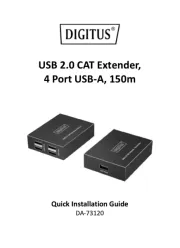
30 Juli 2025
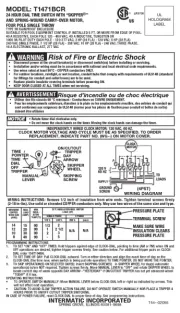
30 Juli 2025
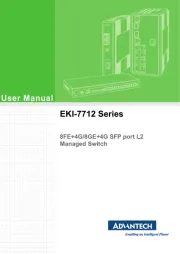
30 Juli 2025
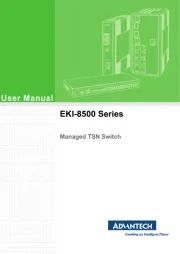
30 Juli 2025
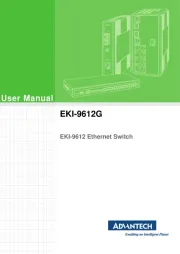
29 Juli 2025
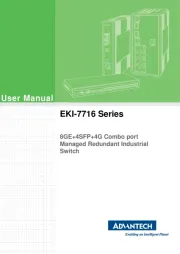
29 Juli 2025
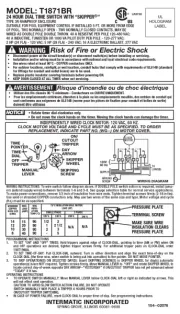
29 Juli 2025
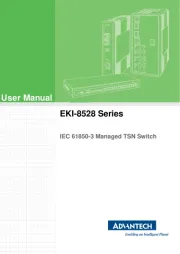
29 Juli 2025
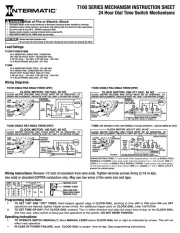
29 Juli 2025
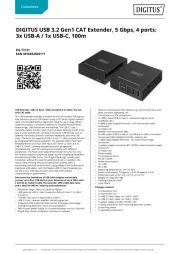
29 Juli 2025